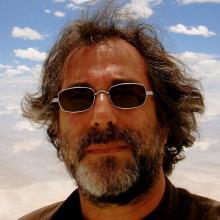Compare Turkmenistan's blue gold idiosyncrasies with energy-deprived Tajikistan, which may be on the verge of becoming a full member of the EEU, currently uniting Russia, Armenia, Belarus, Kazakhstan and Kyrgyzstan.
President Putin will soon be on a Central Asian tour of Tajikistan and Kyrgyzstan. The proverbial cooperation in trade, investment, energy, education and science will be on the table.
And then there's the key Tajik issue: migrant labor. That has even spawned an aviation row, as in how many Russian and Tajik airlines are allowed to regularly fly in and out.
Tajikistan may be a large importer of Russian goods and services. But most of all Dushanbe exports its workforce. Remittances account for half of GDP, roughly $4 billion a year. According to the Main Directorate for Migration Affairs in Moscow, there were almost 900,000 Tajik residents in Russia late last year. Counting the black market, it's way more.
So migration matters must be cleared should Tajikistan join the EEU. Popular support is high, at 68 percent, according to a recent poll by the Eurasian Development Bank.
Have corridor, will travel
The star of the Central Asian show remains, unquestionably, Kazakhstan. Oil and gas paradise; loads of uranium; heart of Eurasia; a working, highly "investable" economy; and directly linked to both OBOR and the EEU.
The official geoeconomic policy reads like Kazakhstan First, which implies Astana keeping indiscriminate good relations with Moscow, Beijing and Washington.
The spectacular coming-of-age in the world stage is set for this summer at the EXPO-2017 international fair, running from June to September. The overall theme is Future Energy; clean energy, new construction materials and smart-grid technologies. That translates as Astana cleverly positioning itself as way more than oil and gas.
The Syria peace talks, the ones that really matter, are taking place inAstana. President Nursultan Nazarbayev is on a roll. He was largely responsible for the Erdogan-Putin de'tente last year, which culminated in hosting the tentative Syria peace process and solidifying Astana's place as a multicultural, multi-ethnic top geopolitical player. It does not hurt that Kazakhstan is now on a two-year stint on the UN Security Council.
EXPO-2017 is costing around $3 billion, financed by a public/private mix. The site will be reconverted into the Astana International Financial Center, an ambitious hub for everyone from Central Asia to the "Caucasus, West China, Mongolia and Europe."
The US angle in Kazakhstan may turn out to be key during the Trump administration. Exxon has been doing business in Kazakhstan for over 20 years now. Mostly it's all about the exceedingly complicated and immensely expensive Kashagan field, north of the Caspian close to Atyrau -- which only started exporting oil late last year.
US Secretary of State T. Rex Tillerson has a previous history of trying to stall selling Exxon's stake in state oil company KazMunayGas below the price he wanted. In the end he gave in. But should oil prices rise, Exxon will inevitably be back in Kashagan in a flash.
And then there's the Tengiz field, where Exxon, Chevron and (currently US-sanctioned) Lukoil agreed to invest a whopping $37 billion last year. They signed the original partnership before the Obama administration sanctions.
Unsurprisingly, a lot hinges on sanctions being lifted. That would signal the green light for renewed US-Russia Big Oil partnership. Exxon, strategically, has funded higher education programs at the KIMEP University in Almaty as well.
China, also unsurprisingly, is already Kazakhstan's top investor. In this case, it's all about OBOR, as a detailed report by the European Council on Foreign Relations on the privileged "transport and gas hub of Central Asia" has stressed. 80% of all foreign investment in the Central Asian "stans" goes to Kazakhstan.
(Note: You can view every article as one long page if you sign up as an Advocate Member, or higher).





